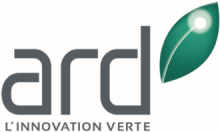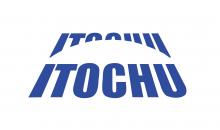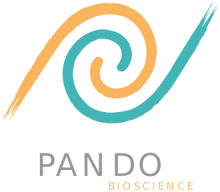| 1 | Christos Batianis, Lyon Bruinsma, Vitor Martins Dos Santos, Ruud Weusthuis, Sara Moreno-Paz, and Sumitha Reddy, Wageningen University & Research, Wageningen, Netherlands | Shikimax: Enabling Near-to-Maximum Production Yield of Aromatics through a Modular Microbial Platform | SHIKIMAX is a transformative advancement in the sustainable production of aromatic compounds, traditionally reliant on environmentally detrimental petrochemical processes. By combining metabolic modeling, rational engineering, and Read more adaptive laboratory evolution, we fundamentally redesigned bacterial catabolism. We have developed a new-to-nature shikimate pathway-dependent catabolism (SDC) in Pseudomonas putida, where the shikimate pathway is reprogrammed as the primary catabolic route. This pathway alteration enables the efficient conversion of simple sugars to the catabolic end-product pyruvate, supporting microbial growth and facilitating the high-yield production of shikimate pathway-derived molecules. Through this metabolic configuration, SHIKIMAX achieves aromatics production yield over 90% of the pathway’s maximum theoretical, establishing a new benchmark in microbial synthesis. This innovation underscores the high metabolic plasticity of microbes and sets a new standard in microbial synthesis by repurposing an anabolic pathway for efficient carbon catabolism. Importantly, SHIKIMAX serves as a plug-and-play microbial platform, allowing easy switching between target aromatics with minimal effort while maintaining high production efficiency and stability. The commercial potential and scalability of SHIKIMAX are enhanced through the Biotech Booster program, a pioneering Dutch initiative funded by the National Growth Fund. This program plays a critical role in bridging the gap between academic research and market applications. It provides substantial funding and a rich ecosystem of resources, including mentorship from industry leaders, entrepreneurial guidance, and access to investors. Regular meetups and training sessions, along with the dedicated support of assigned business developers and patent attorneys, facilitate the complex journey from innovation to commercialization. Read less |
| 2 | Ava Chan, Biology, University of Oxford, Oxford, Oxfordshire, United Kingdom | Next Generation Antibiotic-Contaminated Wastewater Treatment Solution for a Bio-Circular Economy | Antibiotic pollution is the leading cause of antimicrobial resistance (AMR), which causes 1.27 million global deaths and an economic cost of €1.5 billion yearly. According to the United Nations, AMR will Read more contribute to 50 million deaths by 2050. Roughly 200,000 tons of antibiotics are consumed annually, with up to 90% being excreted into wastewater systems. However, conventional wastewater treatment plants can only degrade less than 30% of these antibiotics. Not to mention less than 10% of wastewater is treated in and in low-income countries. Antibiotics persist in the environment, leading to ecotoxicity, impaired plant germination, reduced agricultural yield, superbug proliferation, and biodiversity loss.
In the light of this problem, I herewith propose a next-generation antibiotic-contaminated wastewater treatment solution for a bio-circular economy. Antibiotics in wastewater are degraded by synthetic mirror-image antibiotic degrading enzymes composed of D-amino acids, and the by-products would be converted to regenerate antibiotics or other useful chemicals. Read less |
| 3 | Ravi Chawla, ChakraTech, San Diego, CA | Transforming the Manufacturing of Low-Carbon Intensity Biopolymers with ChakraTech | Polyhydroxyalkanoates (PHAs), biopolymers that closely mimic fossil-fuel-derived plastics, have long been recognized as a promising alternative to conventional plastics. However, their commercialization has faced Read more significant scientific, engineering, and economic challenges. At ChakraTech, we are developing an innovative, low-carbon-intensity platform to address these barriers and enable the large-scale production of PHAs. By leveraging metabolic engineering and bioprocess optimization, we enhance production efficiency, consistency, and scalability, while pioneering manufacturing techniques reduce costs and improve mechanical properties to make PHAs competitive with traditional plastics. Our comprehensive business strategy complements these technical advancements, focusing on strategic collaborations with industry, academia, and regulatory bodies to build a robust supply chain and drive market adoption. Through knowledge sharing and stakeholder engagement, we aim to accelerate the integration of PHAs into diverse industries. ChakraTech’s interdisciplinary approach represents a paradigm shift in biopolymer production. Combining scientific research, engineering innovation, and strategic collaboration, we are advancing PHAs as a sustainable, cost-effective alternative to conventional plastics and contributing to a low-carbon, circular economy. Read less |
| 4 | Ivan Citakovic1,2, Gaël Bougaran2, Bruno Saint-Jean2, Fabienne Hervé2, Damien Reveillon2, Jean-Baptiste Bérard2, Sabine Stachowski-Haberkorn2, Odon Thiébeauld1, Cyril El Khoury1, Yann Thomas1 and Francis Mairet2, (1)Immunrise Biocontrol France, Bordeaux, France, (2)IFREMER, Nantes, France | Optimizing Photobioreactor Cultures of Microalgae Amphidinium Carterae for Enhanced Biomanufacturing of Biopesticides | In a world where access to sustainable and uncontaminated food is a growing challenge, transitioning agriculture toward biopesticide use is a crucial step forward. Immunrise Biocontrol, a French biotechnology company, is driven by Read more the vision of transforming agriculture through the development of biopesticides from marine microorganisms while paving the way for a more sustainable approach to crop protection for the world.
Amphidinium carterae, a marine microalga identified by Immunrise Biocontrol, is a promising non-model organism for biopesticide biomanufacturing. The species is known for the production of amphidinols (AMs), macromolecular toxins with potent antifungal properties. However, to achieve industrial production of AMs from A. carterae, the company needed to understand environmental triggers that maximize AM yields and proportion of biologically active AM forms, as well as to undertand ratio of these molecules inside and outside the cells. Our study focused on optimizing photobioreactor culture conditions to enhance AM yields and increase the proportion of biologically active AMs. Using 18 one-liter photobioreactors, we tested the effects of light irradiance and stationary-phase duration on AMs production. Intra- and extracellular AMs were sampled across multiple points of culture’s stationary phase and quantified via mass spectrometry. Results showed the presence of extracellular AMs (<2% of the total) only in traces, emphasizing the potential importance of focusing on intracellular AMs for large-scale production. Increased irradiance and prolonged cultivation significantly boosted AM yields, with the majority of accumulation occurring by the 5th day of the stationary phase. Notably, harvesting at the early stationary phase yielded the best ratio of biologically active to inactive AM forms, highlighting the advantages of utilizing AMs at the onset of this phase. In conclusion, this study highlighted the importance of light irradiance and stationary-phase duration in AM production while advancing A. carterae as a scalable, non-model system for the biomanufacturing of biopesticides. Read less |
| 5 | Daniel Figueiredo1, Ana Teresa Gonçalves1,2, Hugo Pereira1,3, João Varela1,3 and Luisa Gouveia1,4, (1)GreenCoLab – Associação Oceano Verde, Faro, Portugal, (2)SPAROS, Faro, Portugal, (3)CCMAR, Center of Marine Sciences, Faro, Portugal, (4)LNEG, National Laboratory of Energy and Geology I.P, Lisbon, Portugal | Pioneering Algae Solutions: Bridging Research and Innovation for an Evolving Industry | The field of algae biotechnology has experienced remarkable growth in recent years, driving innovation across food, agriculture, and aquaculture sectors. Sustainable, algae-derived products have gained traction through Read more substantial European Union investments and initiatives such as novel food categories and the Green Deal. This momentum has attracted significant commercial interest from diverse stakeholders and GreenCoLab (GCL) has emerged as a key facilitator in this landscape, promoting sustainability and economic viability by fostering collaboration between research and industry stakeholders. GCL's research and innovation agenda addresses the entire algae value chain, from optimizing feedstock production to processing biomass into high-value ingredients using biorefinery approaches. These efforts support the development of algae-based products for various industries, including nutraceuticals, cosmeceuticals, agriculture, and human and animal nutrition. Over the past years, GCL has successfully transformed existing knowledge within research groups into a robust portfolio of business-to-business services, tailored for international markets. Central to GCL's mission is its customer-focused development of engineered prototypes for diverse biotechnological applications. The strain improvement working group exemplifies this commitment, specializing in advanced algal strains optimized for industrial applications. Employing food-approved methodologies, the group leverages cutting-edge technologies to screen, isolate, and test strains for large-scale cultivation. Innovations include enhancing biochemical composition, modifying pigment profiles, increasing resilience to environmental stresses and adapting strains for improved benefits in animal feed. A key example is the development of improved Pavlova gyrans strains for sustainable and nutritious aquafeeds. Through random mutagenesis and rigorous screening, mutant strains were optimized for enhanced biochemical profiles and bioactivities. Notably, Pavlova strains achieved improved antioxidant and immunostimulant activities in a fish ex-vivo model, highlighting their potential as high-value functional ingredients in aquafeeds. These advancements enable the creation of tailored, high-efficiency algae-based products, while improving the sustainability of industrial bioprocesses. Read less |
| 6 | Saroj Raj Kafle, Chemical Engineering, Texas A&M University, College Station, TX | Biosynthesis of Cyanophycin (CGP) By Fed-Batch Culture of Metabolically Engineered Escherichia coli | Cyanophycin, also known as CGP or multi-L-arginyl-polyCyanophicin (CGP), is a biopolymer that stores carbon, energy, and nitrogen in bacteria and is made up of aspartic acid and Read more arginine amino acids. It holds potential applications across diverse industries, including food, medicine, cosmetics, nutrition, and agriculture, including that of being an effective and biodegradable metal anticorrosion agent. Our team has engineered Escherichia coli BL21 for the overproduction of cyanophycin from renewable carbohydrate feedstocks. The key objective of this work was to improve productivity, titer and product yield aimed at developing a commercially viable fermentation and downstream process. Initial shake flask studies using one of the metabolically engineered E. coli strains demonstrated higher CGP production and increased cell densities when lactose was used as an inducer, compared to IPTG. Lactose is also much more cost effective vs. IPTG. To enhance batch production levels, the effects of various micronutrients were evaluated. Supplementation with 1% ribose and 1.5 mM phosphate significantly improved production, achieving a maximum CGP yield of 24 g/L. Building upon these findings, a high-cell-density fed-batch culture system was developed to further enhance CGP production. Using cost-effective feedstocks, the fed-batch process achieved a 1.54-fold remarkable improvement in yield, consistent with the objective of developing an economically viable approach for industrial CGP production. Read less |
| 7 | Jeffrey Katz, Advanced Manufacturing, Jacobs, Greenville, SC | EPC Recommendations for Improved Scale-up Success | Navigating the scale up of a bioprocess from the lab to commercial viability is an effort with many challenges and Read more pitfalls. While each bioprocess is unique, the project development process is more defined. This presentation looks at the EPC project development steps while explaining the needs and goals to manage success at each step. Each phase from feasibility through construction tightens the level of confidence in total installed cost and return on investment for your project. The goals, required information, level of effort, and results from each phase build on the previous phase. Identification of process unit operations which require third party vendor information to move the design forward should be identified early in the design to reduce changes in later phases that result higher engineering cost and significant schedule delay. While the biology of the bioprocess is the focus of early R&D work, the integration of the bioprocess product stream with the purification and recovery steps becomes the focus during the design phases. Jacobs has an established record on the scale up, and installation of commercial scale bioprocess projects around the world. These recommendations are lessons learned from previous projects, as they have moved through project development. Read less |
| 8 | Michel Gutiérrez-Leal1, Daniel Tobías-Soria2, Miguel Villegas-Mendez1, Ivan Salmerón3, Julio Montañez4 and Lourdes Morales-Oyervides4, (1)Universidad Autonoma de Coahuila, Saltillo, CU, Mexico, (2)South Dakota School of Mines, Rapid City, SD, (3)The Graduate School, Graduate Program in Food Science and Technology, Autonomous University of Chihuahua, Chihuahua, CI, Mexico, (4)Facultad de Ciencias Químicas, Universidad Autónoma de Coahuila, Saltillo, CU, Mexico | Techno-Economic Assessment of Poly(3-hydroxybutyrate) Production from Brewery Waste Using Bacillus Megaterium | A bioprocess for the production of poly(3-hydroxybutyrate) (PHB) was developed using brewery by-products—brewer's spent grain (BSG) and brewer's spent yeast (BSY)—as substrates, with Bacillus megaterium. The feasibility of the process was assessed through Read more a simulation-based approach, incorporating circular economy principles. The results indicate that the annual PHB production is 1,877 tonnes. From an economic perspective, a capital investment of $21.38 million USD is required to produce this amount of PHB. The process demonstrates a positive net present value (NPV) of $41 million USD, a payback period of 2.47 years, an investment return of 40.4%, and an internal rate of return (IRR) of 40.4%. In a favorable scenario, total revenue reaches $27.6 million USD, with a production cost of PHB of $7.06 USD per kilogram. In conclusion, this study presents a viable and sustainable model for bioplastic production, leveraging agroindustrial waste as feedstocks. Read less |
| 9 | Erika Peña-Jurado1, Samuel Pérez-Vega1,2, Julio Montañez3, Lourdes Morales Oyervides3 and Ivan Salmerón1,4, (1)The Graduate School, Graduate Program in Food Science and Technology, Autonomous University of Chihuahua, Chihuahua, CI, Mexico, (2)School of Engineering Sciences, LUT University, Kouvola, Finland, (3)Facultad de Ciencias Químicas, Universidad Autónoma de Coahuila, Saltillo, CU, Mexico, (4)Department of Chemical and Biological Engineering, South Dakota School of Mines and Technology, Rapid City, SD | Biopolymer Production from Dairy Wastewater: Optimizing Poly(3-Hydroxybutyrate) Synthesis and Cost Analysis Using Bacillus Subtilis EPAH18 | The growing demand for sustainable bioplastics has spurred interest in utilizing industrial waste streams for biopolymer production. Poly(3-hydroxybutyrate) (PHB), a biodegradable thermoplastic, can be synthesized by bacteria through fermentation using Read more renewable feedstocks. In this study, dairy industry wastewater, a byproduct often discarded as waste in Mexican cheese factories, was explored as a cost-effective and sustainable substrate for PHB production. Bacillus sp. EPAH18 was employed for fermentation, with key parameters such as nitrogen source, carbon to nitrogen (C/N) ratio, and pH optimized to achieve a PHB yield of 0.54 g/L. Process simulation using Aspen Plus assessed the technical feasibility and economic viability of the proposed biorefinery. Economic analysis for feed capacities of 1000 and 2000 tons/hour estimated production costs at $10.2–$16.9/kg PHB, demonstrating the potential competitiveness with conventional biopolymer production. This study underscores the dual advantage of waste valorization and sustainable material production, offering a pathway to industrial-scale implementation of PHB from dairy wastewater. Read less |
| 10 | Job Tchoumtchoua, Kévin Léonard, Soukaina Hilali and Mahmoud Hamzaoui, Biomass Valorization Platform - Extraction Department, Celabor Srl, Herve, Belgium | Breakthrough Processes for Production of Bioactive Peptides from Innovative Sources of Proteins | The food sector represents the first industrial field in Wallonia corresponding to sales of €8.3 billion, exports of €4.3 billion, invests of almost €400 million and Read more providing work to 23.700 people in 2020. FoodWal portfolio has been launched in Wallonia, thanks to a four-year subsidy from the Public Service of Wallonia (Economy, Employment and Research). The FoodWal portfolio consists of three major projects: MICROBoost, PEPTIBoost and PROTEBoost, with a general objective to boost disruptive innovation in the food sector in Wallonia. The focus is respectively put on microbiota, bioactive peptides and alternative microbial proteins. The PEPTIBoost project aims to produce and characterise innovative bioactive peptides to boost the nutritional, functional and organoleptic quality of food and feed products. Specifically, the purpose is to add value to protein by-products from the food industry by integrating them in the production chain of functional foods through the production of bioactive peptides. Bioactive peptides are known for their effectiveness in promoting health and many potential bioactive peptides originating from food items have been documented over the years.
In this project, CELABOR has developed a novel approach of fractionating protein hydrolysates containing potential bioactive peptides using the Centrifugal Partition Chromatography – CPC, allowing the extraction peptides of interest. The peptides were further purified by membrane filtration, visualised with High-Performance Thin Layer Chromatography (HPTLC) for and precisely characterised by Ultra-High-Perfomance Liquid Chromatography coupled to Mass Spectrometry (UPLC-MS). The bioactivities of the generated peptides were validated though in vitro and in vivo pre-clinical models, and their effects on obesity, inflammatory system and intestinal microbiota were also determined. An artificial intelligence tool is also under development by the Consortium in order to predict the physicochemical and structural characteristics of protein or peptide hydrolysates and their affinity for specific receptors. Read less |
| 11 | Joel Sirois, BioIntelligence Technologies, Sherbrooke, QC, Canada; Chemical engineering and Biotechnological engineering, Universite de Sherbrooke, Sherbrooke, QC, Canada | Industrial Biotech Breakthroughs: One Probe to Measure Everything | The industrial biotechnology sector is experiencing unprecedented growth, outpacing the chemical industry by a factor of five. This surge necessitates advanced technologies for effective monitoring, control, and understanding of Read more large-scale cell culture and fermentation processes. Minimizing product losses due to process deviations, human errors, contaminations, and variability is crucial. With the emergence of diverse bioprocesses, monitoring the production of various products from different nutrients and tracking critical metabolic intermediates is essential. Traditional spectroscopy-based probes, while useful, are limited by their physical properties.
To overcome these limitations, our team has integrated native fluorescence with artificial intelligence, leveraging our deep industry knowledge. This collaboration has resulted in a new category of intelligent instruments capable of capturing metabolic chemodynamics. This technology enables the monitoring of a wide range of molecules involved in cell culture and fermentation, including nutrients, metabolic intermediates, and final products. Our innovative solution offers a versatile and customizable approach for monitoring, controlling, and understanding any fermentation process. In this conference, we will explore the mindset behind this innovation, discuss the measurement principles, and showcase real-life applications from laboratory developments to pilot scale-ups and full-scale implementation. Read less |














